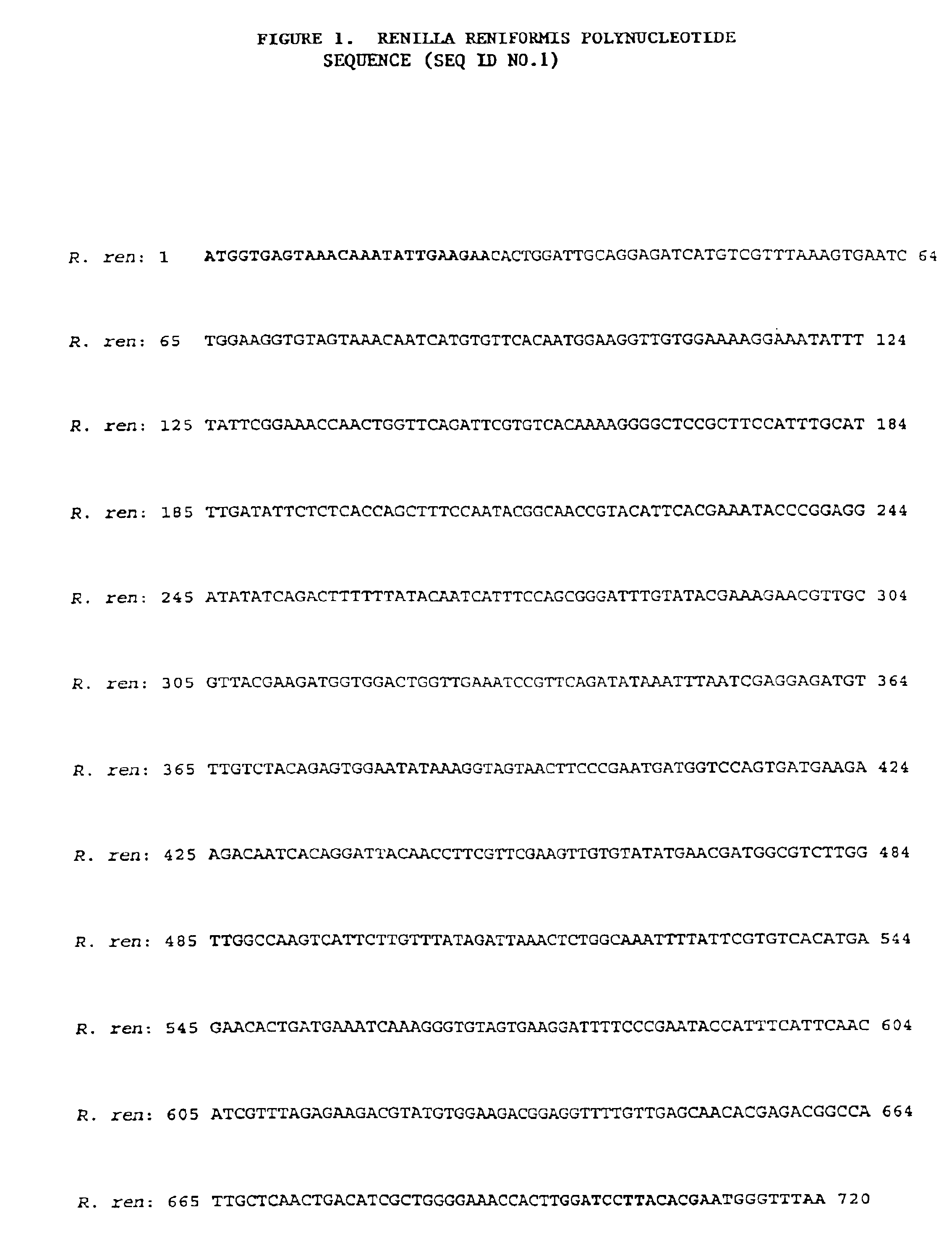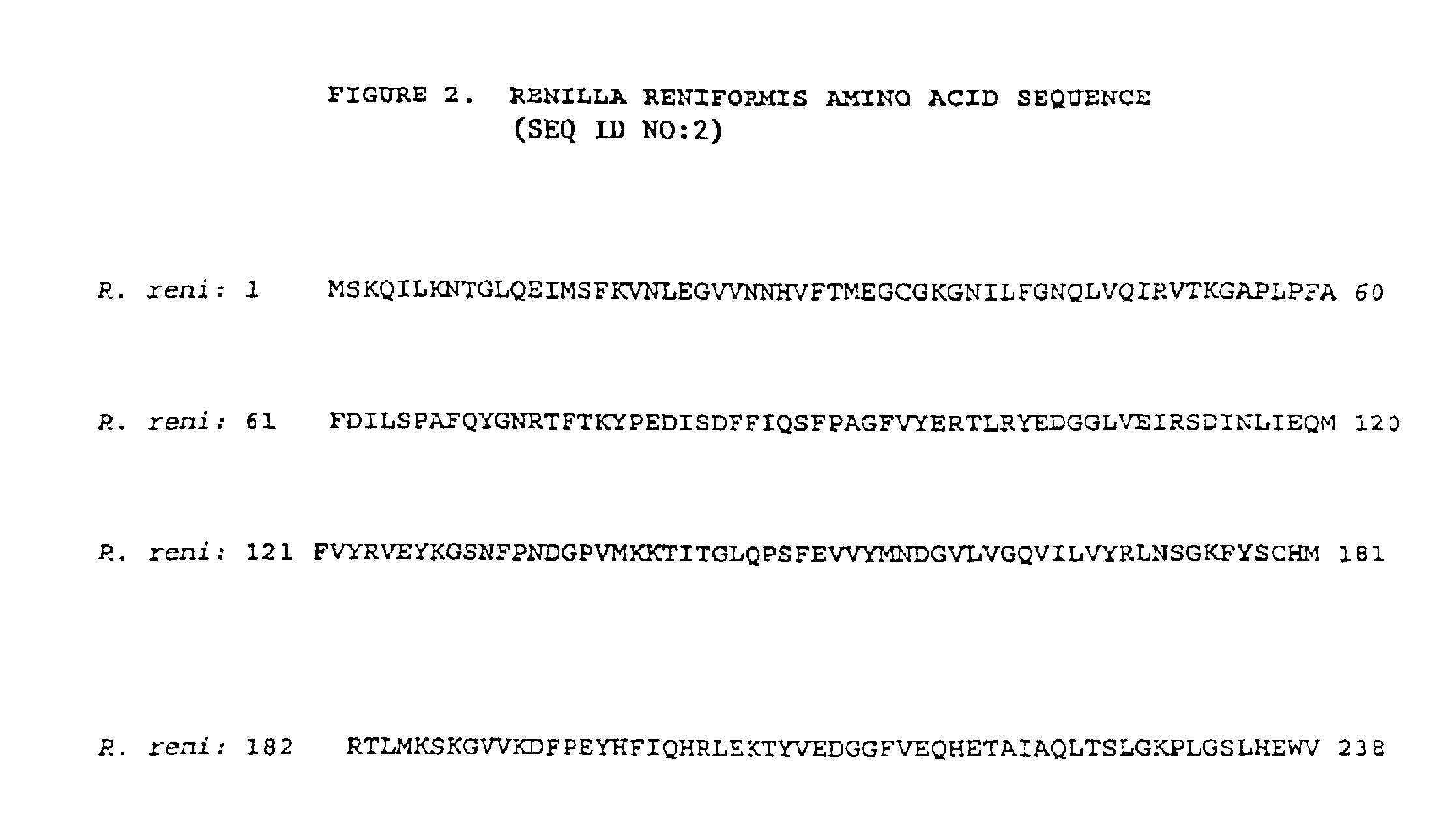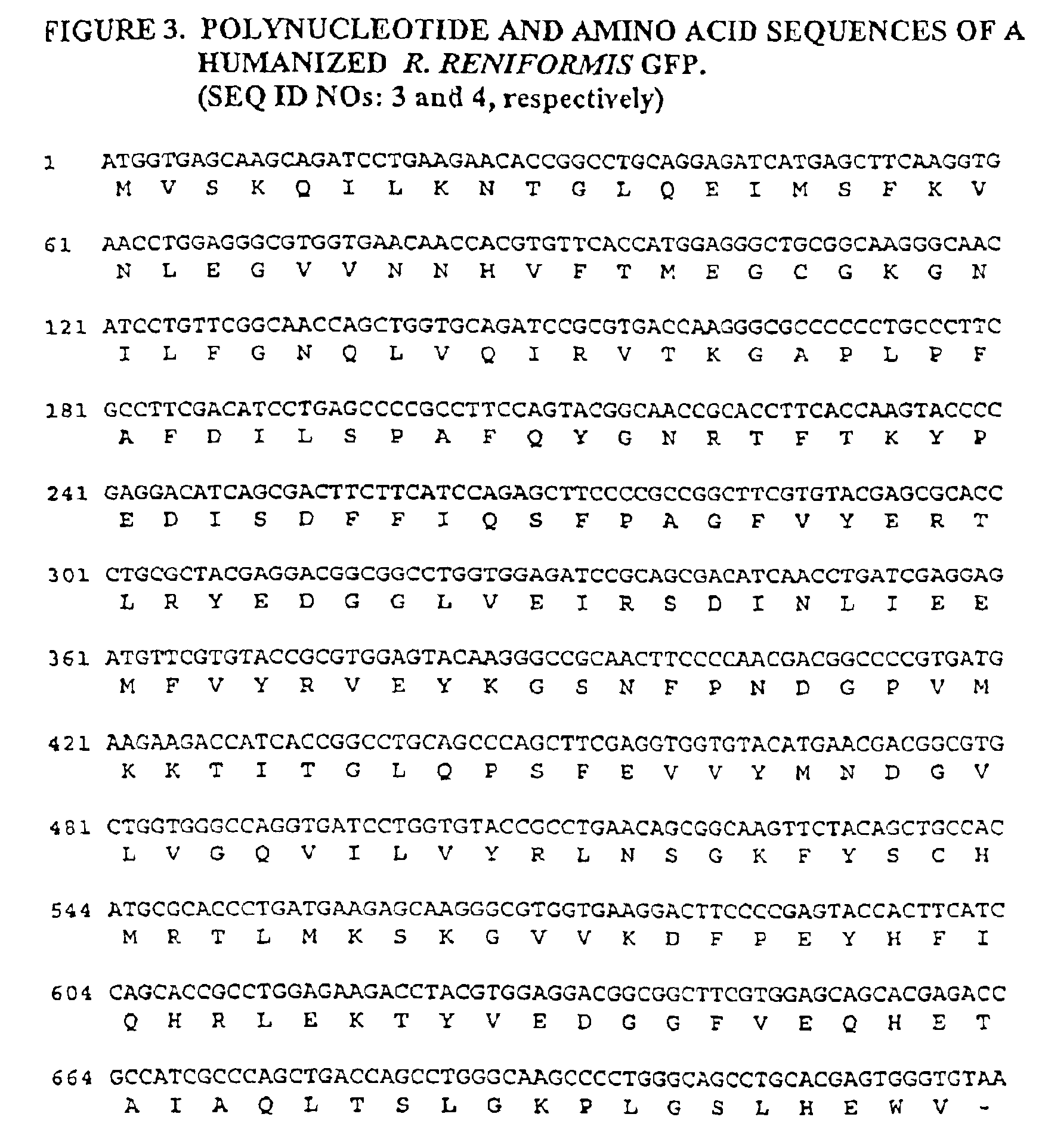Dimeric flourescent polypeptides
a technology of flourescent polypeptides and dimerization, applied in the field of biochemistry, molecular and cell biology, medical diagnostics and drug screening methodologies, can solve the problems of low quantum yield, low expression in cells of higher eukaryotes, and relatively broad excitation and emission spectra
- Summary
- Abstract
- Description
- Claims
- Application Information
AI Technical Summary
Benefits of technology
Problems solved by technology
Method used
Image
Examples
example 1
Monitoring the Interaction of Polypeptides Using IDFPs
[0149]IDFPs are well suited for applications that monitor the association of fusion polypeptides using energy transfer. In order to monitor the association of two polypeptides of interest using IDFPs, one must first select a pair of fluorescent polypeptides that are donor and acceptor to each other. Each polypeptide in the pair must be capable of homodimerization. An example of such a pair P4-3 and S65T. Another pair useful according to the invention is P4-3 and R. reniformis GFP (hrGFP). The nucleic acid sequence encoding the fluorescence donor polypeptide is used to generate a construct encoding, in order, a copy of the donor polypeptide (e.g., P4-3), a linker, a second copy of the fluorescence donor polypeptide and one of the polypeptides of interest (alternatively, the sequence encoding the protein of interest may be placed upstream of and in frame with the sequences encoding the IDFP). Similarly, the sequence encoding the fl...
example 2
Labeling a Cell with an IDFP
[0153]IDFPs according to the invention can be used in any application in which fluorescent polypeptides are useful. For example, cells can be labeled by expression of IDFPs to monitor the uptake and expression of transgene constructs, including plasmid-based and retroviral constructs. Cells may also be labeled to facilitate subsequent FACS analysis in a mixed population. To label a cell, an IDFP-encoding construct is introduced to cells by standard methods appropriate to that cell type. Following introduction, selection for cells receiving the construct can either be performed by standard positive or negative selection based on additional selectable marker sequences (e.g., antibiotic resistance genes), by sorting or selection by FACS, or by allowing cells to form colonies and isolating those colonies that fluoresce when irradiated with light within the excitation spectrum of the IDFP. Maintaining the cells under conditions permitting the expression of the...
example 3
Double Label Monitoring of Protein Localization
[0154]Fluorescently labeled proteins are often used to examine the sub-cellular localization of proteins of interest. Frequently, it is useful to monitor the localization of two or more proteins or protein domains simultaneously, for example, as a means of identifying relationships between the proteins. When two or more proteins are labeled with fluorescent polypeptides that have the capacity to heterodimerize, the sensitivity of the localization assay can be adversely affected by heterodimerization between the fluorescent polypeptides.
[0155]Examples of proteins to be monitored for localization include proteins that are recruited to the vicinity of the plasma membrane upon a stimulus such as growth factor engagement of a receptor (e.g., G-proteins, Protein Kinase A, SH2-domain containing proteins, etc.), proteins that localize to the nucleus in response to a stimulus (e.g., steroid hormone receptor), or proteins that localize to the gol...
PUM
| Property | Measurement | Unit |
|---|---|---|
| emission wavelength | aaaaa | aaaaa |
| emission wavelength | aaaaa | aaaaa |
| excitation wavelength maximum | aaaaa | aaaaa |
Abstract
Description
Claims
Application Information
 Login to View More
Login to View More - R&D
- Intellectual Property
- Life Sciences
- Materials
- Tech Scout
- Unparalleled Data Quality
- Higher Quality Content
- 60% Fewer Hallucinations
Browse by: Latest US Patents, China's latest patents, Technical Efficacy Thesaurus, Application Domain, Technology Topic, Popular Technical Reports.
© 2025 PatSnap. All rights reserved.Legal|Privacy policy|Modern Slavery Act Transparency Statement|Sitemap|About US| Contact US: help@patsnap.com



